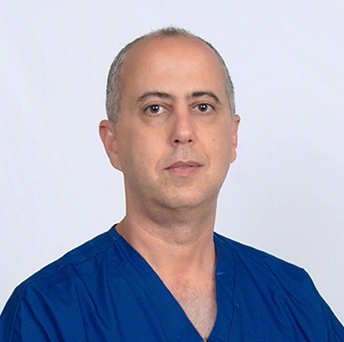Powerful Effects of High Dose Vitamin C IV Therapy: Benefits & Dangers
What Is High Dose Vitamin C? A Deep Dive into Ascorbic Acid and Its Functions
Vitamin C, scientifically known as ascorbic acid, is a water-soluble nutrient essential for human health. This article is about the ultimate guide to high-dose Vitamin C: its benefits, risks, and IV therapy.
It’s best known for its role in immune function, skin health, and collagen production. Unlike most animals, humans can’t produce vitamin C internally, so we have to get it from food or supplements.
Found in citrus fruits, berries, and green vegetables, vitamin C is vital for tissue repair iron absorption, and acting as a powerful antioxidant.
So what exactly does “high dose” mean?
While the recommended daily allowance for adults is between 65 and 90 milligrams, high-dose vitamin C typically refers to doses ranging from 1,000 mg to 100,000 mg, especially when given intravenously. This isn’t the dosage you find in your average orange or multivitamin.
High-dose vitamin C IV therapy allows the body to receive these mega doses quickly and efficiently, bypassing the digestive tract entirely.
At these levels, vitamin C starts to behave differently. Instead of being an antioxidant, it can take on pro-oxidant roles, especially in the bloodstream.
This dual behavior is what makes high-dose vitamin C so interesting to researchers. It can generate hydrogen peroxide in tissues, which selectively harms harmful cells like cancerous ones without affecting healthy cells.
This mechanism is what gives high-dose vitamin C its therapeutic edge.
Índice
1. How Much Is Too Much? Defining “High Dose” Vitamin C and Recommended Limits
2. How High-Dose Vitamin C Works in Your Body: Mechanisms of Action Explained
3. Oral High-Dose Vitamin C: How Effective Is It Compared to IV and Liposomal Forms?
4. Liposomal Vitamin C: Enhanced Absorption or Just Another Supplement Hype?
5. Intravenous Vitamin C Therapy: Why It’s the Gold Standard for High Doses
6. High-Dose Vitamin C Benefits for Immunity, Infection, and General Wellness
7. Using High-Dose Vitamin C in Cancer Care: Adjunctive Therapy and Clinical Evidence
8. Reducing Inflammation and Oxidative Stress with High-Dose Vitamin C Infusions
9. Vitamin C for Skin, Collagen, and Wound Healing: Is the Glow Real?
10. Potential Side Effects and Risks of High-Dose Vitamin C Therapy You Must Know
11. Vitamin C IV Therapy and Chronic Conditions: Fatigue, Allergies, and Neurological Health
12. Contraindications and Drug Interactions: Who Should Avoid High-Dose Vitamin C?
13. Finding Safe and Professional IV Vitamin C Providers: What to Look For
14. Cost, Access, and Dosage: Practical Considerations Before Starting High-Dose Vitamin C IV Therapy
15. Table: Factors Affecting High-Dose Vitamin C Cost and Usage
16. Preguntas más frecuentes (FAQ)
17. Conclusión
18. Referencias
1. How Much Is Too Much? Defining “High Dose” Vitamin C and Recommended Limits
The line between beneficial and excessive vitamin C isn’t always crystal clear.
While most people can safely consume up to 2,000 mg daily from oral supplements, exceeding this amount—especially in oral form—can lead to digestive side effects like diarrhea or bloating. This limit is known as the “bowel tolerance” threshold, beyond which vitamin C becomes uncomfortable for the average person.
However, the game changes with intravenous administration. High-dose vitamin C IV therapy allows 25 to 100 grams (yes, grams!) to enter the bloodstream without passing through the gut.
This direct delivery method prevents the digestive distress associated with oral megadoses and achieves blood concentrations up to 70 times higher than oral intake. Such concentrations are necessary for the therapeutic effects seen in some medical conditions.
But “too much” can still exist, even with Terapia intravenosa. Excessive vitamin C can lead to complications like kidney stones, especially in predisposed individuals.
It’s also contraindicated in people with certain genetic conditions like G6PD deficiency. Professional oversight is essential when considering high-dose vitamin C IV therapy.
What works wonders for one person might be risky for another.
2. How High Dose Vitamin C Works in Your Body: Mechanisms of Action Explained
Vitamin C is a potent antioxidant at normal levels, scavenging harmful free radicals that can damage cells and DNA.
This helps reduce inflammation, support the immune system, and maintain overall cellular health. But when administered in high doses, especially intravenously, vitamin C’s behavior shifts—acting less like a protector and more like a warrior on a mission.
In high concentrations, vitamin C transitions from an antioxidant to a pro-oxidant in the extracellular space. It promotes the generation of hydrogen peroxide, a reactive oxygen species that’s surprisingly toxic to cancer cells and pathogens.
These cells lack the enzymes needed to neutralize hydrogen peroxide, making them vulnerable to oxidative damage, while healthy cells remain mostly unaffected.
Additionally, high doses of vitamin C stimulate various biological pathways. It supports collagen synthesis, crucial for tissue repair and skin health.
It also enhances immune responses by supporting the function of white blood cells, promoting phagocytosis, and improving signaling between immune cells.
The result?
A multi-pronged therapeutic impact that extends beyond simple vitamin supplementation.
3. Oral High Dose Vitamin C: How Effective Is It Compared to IV and Liposomal Forms?
Oral vitamin C is the most common method of supplementation, found in everything from chewable to fizzy powders.
It’s accessible, easy to use, and effective for general health maintenance. However, the body can only absorb so much through the digestive tract in high doses. Absorption rates drop significantly once you exceed 500 mg; the rest is excreted in urine.
This limitation is why people interested in therapeutic effects—such as for infections or chronic illness—often turn to other methods. High-dose vitamin C can cause digestive upset at higher levels, leading to bloating, cramps, and diarrhea.
The gut acts like a gatekeeper, only letting in a limited amount regardless of intake.
While oral forms may work for daily health support, they’re not ideal for achieving the plasma concentrations needed in therapies like cancer support or severe immune challenges.
In those cases, alternatives like liposomal and IV forms are better suited. Still, oral vitamin C remains a valuable tool with some practical limitations for those who can’t access it.
4. Liposomal Vitamin C: Enhanced Absorption or Just Another Supplement Hype?
Liposomal vitamin C is marketed as the next big thing in vitamin delivery, and for good reason.
This supplement encapsulates vitamin C molecules in tiny fat-like particles called liposomes, which help protect the vitamin through the digestive system and improve absorption. Some studies suggest liposomal vitamin C can significantly increase blood levels compared to standard oral tablets.
The appeal here lies in getting more bang for your buck—more vitamin C delivered to your bloodstream with fewer side effects. Liposomal vitamin C is gentler and more bioavailable than oral doses that hit the gut hard at high levels.
This makes it ideal for people who are sensitive to digestive disturbances or want to take higher doses without turning to Terapia intravenosa.
However, while it’s more efficient than oral forms, liposomal vitamin C still can’t match the plasma concentrations achieved through intravenous delivery. It’s a middle ground—more potent than pills but not quite a medical-grade intervention.
For many, though, it provides a practical, effective, and accessible option for increasing vitamin C intake.
5. Intravenous Vitamin C Therapy: Why It’s the Gold Standard for High Doses
IV vitamin C therapy is the go-to method for delivering high doses directly into the bloodstream.
Unlike oral or liposomal forms, it bypasses the digestive tract entirely, ensuring 100% bioavailability. This method is particularly valuable for therapeutic uses, such as in cancer care, chronic infections, or severe fatigue syndromes, where maximum plasma concentration is essential.
One of the main advantages of high-dose vitamin C IV therapy is that it allows patients to receive doses up to 100 grams in a single session—far more than what the body can absorb orally. This high concentration helps generate hydrogen peroxide in tissues, which may selectively kill harmful cells, such as bacteria or cancer cells.
It also enhances immune responses, reduces inflammation, and boosts energy.
Medical professionals often administer IV therapy in a controlled setting, monitoring vital signs and kidney function to ensure safety. The procedure typically takes 30 to 90 minutes; most patients tolerate it well.
The effectiveness and controlled delivery make IV therapy the gold standard when high dose vitamin C is needed for more than just general wellness.
6. High Dose Vitamin C Benefits for Immunity, Infection, and General Wellness
Vitamin C is a powerhouse when it comes to supporting the immune system.
High doses, especially via IV, enhance the activity of white blood cells, increase antibody production, and help the body mount a faster, more efficient response to pathogens. Many people turn to vitamin C when they feel a cold coming on—and for good reason.
But its immune-boosting benefits extend beyond colds and flu. High-dose vitamin C IV therapy has shown promise in fighting chronic infections like Lyme disease and Epstein-Barr virus and even helping reduce symptoms in conditions like chronic fatigue syndrome.
It can lower inflammation, increase energy levels, and support overall resilience.
High-dose vitamin C is often used as a preventative tool for general wellness. People seeking better skin, higher energy, or protection against seasonal illnesses use it to “top off” their body’s antioxidant defenses.
It also helps counteract oxidative stress from lifestyle factors like poor diet, pollution, or lack of sleep. The benefits are holístico and noticeable for many.
7. Using High Dose Vitamin C in Cancer Care: Adjunctive Therapy and Clinical Evidence
One of the most studied and controversial uses of high-dose vitamin C is in cancer therapy.
While it’s not a cure, research shows that IV vitamin C can support conventional treatments by improving quality of life, reducing treatment side effects, and potentially inhibiting tumor growth in some cancers. The mechanism lies in its pro-oxidant effect, which generates hydrogen peroxide that selectively harms cancer cells.
Some clinical trials have demonstrated that high-dose vitamin C IV therapy may help reduce the toxicity of chemotherapy and radiation, allowing patients to tolerate treatments better. It can reduce nausea, fatigue, and inflammation while helping to maintain appetite and energy levels.
These improvements in quality of life are particularly valuable for patients undergoing aggressive treatment regimens.
That said, this use remains controversial in the medical community. Critics argue that more randomized, large-scale clinical trials are needed before vitamin C can be widely accepted in mainstream oncology.
Still, many integrative cancer clinics use it as a complementary therapy, and anecdotal reports from patients are often positive. Cancer patients must consult their oncologist before starting high-dose vitamin C.
8. Reducing Inflammation and Oxidative Stress with High Dose Vitamin C Infusions
Inflammation is a root cause of many chronic diseases, from heart disease to diabetes to autoimmune conditions.
High-dose vitamin C is a powerful antioxidant, neutralizing free radicals and reducing systemic inflammation. By doing so, it helps prevent cellular damage and supports tissue repair.
IV therapy allows vitamin C to flood the system, quickly reducing markers of inflammation like C-reactive protein (CRP) and interleukins. This makes it particularly useful in managing conditions where inflammation is central to rheumatoid arthritis, fibromyalgia, and post-viral fatigue.
It can also reduce pain and stiffness associated with chronic inflammatory diseases.
Additionally, vitamin C helps regenerate other antioxidants, such as glutathione and vitamin E, enhancing the body’s total antioxidant capacity. This “domino effect” of protection boosts overall cellular health and may delay the progression of degenerative diseases.
The result?
You feel better, recover faster, and build resilience from within.
9. Vitamin C for Skin, Collagen, and Wound Healing: Is the Glow Real?
If you’re looking for youthful skin, vitamin C might be your secret weapon. It plays a vital role in collagen synthesis—a protein that gives skin firmness and elasticity.
Without enough vitamin C, skin becomes dull, saggy, and prone to wrinkling. That’s why many beauty products boast vitamin C as a key ingredient.
But topical creams can only do so much. High-dose vitamin C, especially in IV form, delivers nutrients directly to skin cells, supporting deeper regeneration and healing. It can accelerate wound healing, reduce scarring, and improve skin texture.
Many people report a noticeable glow after just one or two sessions of IV vitamin C.
It doesn’t stop at beauty. High-dose vitamin C can significantly speed up healing for those recovering from surgery, injury, or chronic ulcers.
It strengthens blood vessels, improves circulation, and supports the immune response necessary for tissue repair.
Whether for cosmetic or clinical reasons, the benefits for skin and healing are tangible and measurable.
10. Potential Side Effects and Risks of High-Dose Vitamin C Therapy You Must Know
While high dose vitamin C offers many benefits, it’s not without risks.
The most common side effects include digestive upset, such as bloating, nausea, and diarrhea—especially when taken in high oral doses. These symptoms usually indicate that you’ve exceeded your bowel tolerance and should reduce the dose.
More serious, though less common, risks include kidney stones. When vitamin C breaks down, it can be converted into oxalate, a compound that may contribute to stone formation in susceptible individuals.
Those with a history of kidney issues should be cautious and undergo regular monitoring when receiving high-dose vitamin C IV therapy. It’s also essential to stay well-hydrated.
Additionally, people with glucose-6-phosphate dehydrogenase (G6PD) deficiency are at risk of hemolytic anemia when given high doses of vitamin C intravenously. This genetic condition affects the red blood cells’ ability to handle oxidative stress.
Because of this, testing for G6PD deficiency is recommended before starting therapy. Consulting a healthcare professional is crucial to avoid these risks.
11. Vitamin C IV Therapy and Chronic Conditions: Fatigue, Allergies, and Neurological Health
Chronic fatigue is one of the most frustrating symptoms for many people with long-term health issues, and high dose vitamin C has emerged as a supportive therapy.
It helps by reducing oxidative stress and supporting mitochondrial function, which boosts cellular energy production. Many patients report feeling more alert and energized after infusions.
Vitamin C also acts as a natural antihistamine. It stabilizes mast cells and reduces histamine levels in the bloodstream, alleviating allergy symptoms, including nasal congestion, itching, and asthma.
For those with histamine intolerance or severe allergic reactions, regular vitamin C IV therapy can be a game-changer.
Regarding brain health, vitamin C plays a role in neurotransmitter synthesis and protects the nervous system from oxidative damage. It may support cognitive function, reduce brain fog, and even help manage symptoms of anxiety or depression.
Vitamin C’s antioxidant properties offer a protective edge for patients with neurodegenerative disorders.
12. Contraindications and Drug Interactions: Who Should Avoid High Dose Vitamin C?
Not everyone should jump into high-dose vitamin C therapy without caution.
As mentioned earlier, individuals with G6PD deficiency are at risk for hemolysis and should avoid high doses. Likewise, those with a history of kidney stones or chronic kidney disease should be closely monitored or consider alternative therapies.
Drug interactions are another critical consideration. High doses of vitamin C can interfere with some chemotherapy drugs by potentially reducing their effectiveness.
It may also interact with anticoagulants like warfarin and blood pressure medications, altering how these drugs function in the body. Always consult your doctor if you’re on medications before starting IV vitamin C.
Pregnant and breastfeeding women should avoid high-dose therapy unless explicitly prescribed by a healthcare provider. The effects on fetal development or nursing infants have not been thoroughly studied.
The bottom line: this therapy is powerful and effective, but it’s not for everyone. Medical supervision is non-negotiable for safe and effective results.
13. Finding Safe and Professional IV Vitamin C Providers: What to Look For
Choosing the right provider for IV vitamin C therapy is crucial.
Look for clinics that employ licensed medical professionals—naturopathic doctors, integrative MDs, or experienced RNs trained in IV therapy. Don’t hesitate to ask about credentials, experience, and safety protocols.
A good provider will assess your health history, conduct necessary tests (such as G6PD), and customize the treatment plan to fit your needs. Avoid walk-in IV bars that offer vitamin C drips without a complete medical evaluation.
While these spots might be trendy, they may not offer the care or customization needed for high-dose therapy.
Additionally, consider the facility’s cleanliness, how they prepare their infusions, and whether they use preservative-free vitamin C formulations. Reputable clinics often post their sourcing and safety standards on their websites.
A responsible practitioner prioritizes your health and safety over selling a quick wellness boost.
14. Cost, Access, and Dosage: Practical Considerations Before Starting High Dose Vitamin C IV Therapy
The cost of high-dose vitamin C therapy varies widely depending on the provider, dosage, and location.
You can expect to pay between $100 to $300 per session. More comprehensive treatments, which include a cocktail of other nutrients, may be higher. Unfortunately, most insurance providers don’t cover IV vitamin C unless medically indicated.
Access is another issue. While IV therapy is gaining popularity, it’s not available everywhere.
Urban areas often offer more clinics, while rural patients might need to travel to find a reputable provider. Always look for qualified, board-certified practitioners who understand the nuances of high-dose vitamin C protocols.
As for dosage, it’s not one-size-fits-all. Most providers start new patients on a lower dose—around 15–25 grams—and gradually increase depending on tolerance and goals.
For therapeutic uses, such as cancer support, 50 to 100 grams may be used under strict supervision. Discuss your health goals and medical history to determine your safest and most effective plan.
15. Table: Factors Affecting High Dose Vitamin C Cost and Usage
Factor Explicación Impacto en el coste Dosage Level Higher dosages (e.g., 50-100g) require more product and professional supervision Increases total treatment cost Frequency of Infusion More frequent infusions (e.g., weekly vs monthly) raise costs Raises overall cost significantly Localización geográfica Urban areas often charge more than rural clinics May vary 20-50% by region Reputación de la clínica High-end clinics charge premium prices Can increase costs based on brand Practitioner Credentials Board-certified or integrative MDs charge more than RNs Affects cost of each session IV vs Oral Form IV therapy is more expensive than oral or liposomal forms IV therapy is substantially costlier Customization of Micronutrient Cocktail Additional nutrients like B12, magnesium, glutathione raise costs Costs increase per additive Duration of Infusion Longer sessions (1-3 hours) mean higher facility and staff time Session cost increases with duration Lab Testing & Monitoring Some clinics require baseline bloodwork Additional fees apply Cobertura del seguro Most insurers do not cover IV vitamin C unless medically necessary Often paid out-of-pocket
16. Frequently Asked Questions (FAQs) About The Ultimate Guide to High-Dose Vitamin C
Q1. What is a High Dose of Vitamin C?
Respuesta concisa: High-dose Vitamin C refers to amounts of vitamin C that significantly exceed the daily recommended intake, often administered via IV.
Respuesta detallada: Typically, a high dose means taking more than 2,000 mg of vitamin C daily, often reaching 25,000–100,000 mg when delivered intravenously. It is used for immune support, cancer therapy, or chronic illness treatment in medical settings.
This approach allows vitamin C to bypass digestive limits and flood the bloodstream for a more substantial effect.
Q2. How much is a High Dose of Vitamin C?
Respuesta concisa: A high dose typically ranges from 10,000 to 100,000 mg daily, mainly in IV therapy.
Respuesta detallada: Oral forms rarely exceed 2,000 mg due to bowel tolerance. IV vitamin C bypasses this limit, allowing for much higher doses.
Physicians tailor the exact amount based on patient needs, often starting low and increasing depending on tolerance and treatment goals.
Q3. Can high-dose vitamin C kill cancer cells?
Respuesta concisa: In lab studies, high-dose vitamin C has shown the potential to damage or kill specific cancer cells.
Respuesta detallada: Vitamin C creates high concentrations of hydrogen peroxide in body tissues, which selectively harms cancer cells while sparing healthy ones.
While it’s not a substitute for traditional treatments, it shows promise as part of an integrative cancer therapy plan under medical supervision.
Q4. How effective is intravenous IV vitamin C in adults?
Respuesta concisa: Intravenous vitamin C is highly effective for raising blood vitamin C levels and has shown therapeutic effects in various conditions.
Respuesta detallada: IV administration avoids the digestive system and allows for blood concentrations 50–100 times higher than oral methods. This can support immunity, reduce fatigue, and serve as adjunctive therapy for cancer, sepsis, and chronic inflammation.
Q5. What medical conditions are treated with high-dose vitamin C?
Respuesta concisa: High-dose vitamin C supports cancer treatment, infections, chronic fatigue, immune deficiencies, and inflammation.
Respuesta detallada: It’s also used in alternative medicine for Lyme disease, mold toxicity, and autoimmune disorders. Some people use it preventively or to boost energy, especially during cold and flu season.
Q6. Are vitamin C infusions worth it?
Respuesta concisa: For those with specific medical conditions or severe deficiencies, vitamin C infusions can be beneficial.
Respuesta detallada: The worth depends on individual needs and expectations. Many report improved energy, reduced pain, and better well-being for immune support or adjunctive cancer therapy.
However, results vary, and they can be costly without insurance.
Q7. How soon can you feel the effects of IV drip vitamin C?
Respuesta concisa: Many people feel the effects within a few hours to a day.
Respuesta detallada: While energy and alertness may improve quickly, chronic conditions may require several sessions. Some experience a detox-like feeling or increased urination shortly after infusion.
Q8. Can vitamin C help cancer patients?
Respuesta concisa: It may reduce chemotherapy side effects and improve quality of life.
Respuesta detallada: While not a cure, vitamin C IV therapy can make cancer treatment more tolerable. It can help with nausea, fatigue, and infections and has been studied for its potential to enhance chemotherapy’s effectiveness.
Q9. Is high-dose vitamin C safe during pregnancy or breastfeeding?
Respuesta concisa: Without medical advice during pregnancy or breastfeeding, it’s not recommended.
Respuesta detallada: While normal levels of vitamin C are essential during pregnancy, very high doses can be risky and are not routinely recommended. Pregnant or breastfeeding individuals should always consult a doctor before starting any high-dose regimen, especially intravenous forms.
Q10. What are the pros and cons of vitamin C IV therapy?
Respuesta concisa: Pros include rapid absorption and powerful effects; cons include cost, access, and potential side effects.
Respuesta detallada: IV vitamin C bypasses digestive limits, allowing higher therapeutic doses. It’s praised for boosting energy, immune support, and aiding chronic illness.
However, it’s expensive, not widely available, and may carry risks like kidney stones or medication interactions.
Q11. How does vitamin C support the immune system?
Respuesta concisa: It enhances white blood cell function, antibody production, and inflammation control.
Respuesta detallada: Vitamin C is vital for immune health. It stimulates the activity of phagocytes, increases lymphocyte production, and modulates cytokine activity.
These actions help your body respond more efficiently to infections and reduce inflammation.
Q12. Is liposomal vitamin C better than regular oral vitamin C?
Respuesta concisa: Liposomal forms offer better absorption and fewer digestive side effects.
Respuesta detallada: Liposomal vitamin C is encapsulated in fat molecules that help it bypass the digestive tract and enter cells more efficiently. This increases its effectiveness, especially at higher doses, and is ideal for those who can’t tolerate traditional high-dose oral forms.
Q13. Can high-dose vitamin C cause joint pain?
Respuesta concisa: Not typically, but extremely high doses may lead to mineral imbalances or uric acid buildup.
Respuesta detallada: Joint pain is not a common side effect. However, excessive intake could increase uric acid levels or contribute to inflammation in sensitive individuals.
Constantly monitor symptoms and consult a healthcare provider if discomfort occurs.
Q14. What’s the difference between oral high dose and IV vitamin C?
Respuesta concisa: IV therapy provides much higher and faster absorption than oral methods.
Respuesta detallada: Oral vitamin C is limited by the intestines’ absorption capacity and can cause gastrointestinal upset at high doses. IV vitamin C bypasses this, achieving blood levels 50–100 times greater, which may be necessary for therapeutic benefits in cancer or severe illness.
Q15. Can high-dose vitamin C improve skin health?
Respuesta concisa: Yes, it promotes collagen production, reduces wrinkles, and brightens skin tone.
Respuesta detallada: Vitamin C is crucial for collagen synthesis, a protein that keeps skin firm and youthful. IV vitamin C delivers it directly into the bloodstream, which may accelerate skin healing, improve hydration, and combat oxidative stress from UV exposure or aging.
17. Conclusion: The Ultimate Guide to High-Dose Vitamin C
High-dose Vitamin C has emerged as a powerful but sometimes misunderstood therapy.
This vitamin has sparked a wealth of medical interest, from its humble roots as a simple immune booster to its use in advanced cancer therapy. When delivered intravenously, it transcends the limitations of oral intake, delivering robust doses that may enhance everything from immune health to energy, inflammation control, and even skin vitality.
Whether it holds promise- when used wisely- whether High Dose Vitamin C IV therapy dosage, liposomal supplements, or a classic oral megadose, it holds a silver lining that comes with a cloud. Vitamin C megadose risks include kidney stones, medication interactions, and unpredictable responses in sensitive individuals.
That’s why proper medical oversight is non-negotiable. If you’re considering this therapy, especially high-dose Vitamin C, for cancer or immune-related conditions, do your homework, consult professionals, and approach with both enthusiasm and caution.
Ultimately, high-dose vitamin C benefits are as compelling as the therapy is complex. It’s not just about taking supplements or booking the next Vitamin C IV drip nearby.
It’s about understanding your body and science and making informed choices. So whether you’re seeking energy, immune resilience, or a supportive boost during illness, this guide arms you with the knowledge to take the next step wisely.
We have covered everything about the ultimate guide to high-dose Vitamin C, its benefits, risks, and IV therapy.
Everything You Need to Know About The High-Dose Vitamin C With Dr. Dahabra
Experience the ultimate guide to high-dose Vitamin C with Dr. Dahabra. ¿Por qué esperar para liberar su belleza?
Llámenos ahora al (954) 595-2607 o reserve online. Su viaje comienza con sólo un clic o una llamada.
Abraza la belleza, abraza la innovación - Embrace You.
18. Referencias
Beverly Hills Wellness Center & Med Spa, Florida
High-Dose Vitamin C in Advanced-Stage Cancer Patients
Fuente: Institutos Nacionales de Salud (NIH)
Resumen: This study explores the application of high-dose IVC in patients with advanced-stage cancer, assessing its safety and potential therapeutic benefits.
High-Dose Intravenous Vitamin C, a Promising Multi-Targeting Agent in the Treatment of Cancer
Fuente: Institutos Nacionales de Salud (NIH)
Resumen: The article discusses the multifaceted roles of high-dose IVC in cancer therapy, highlighting its potential mechanisms and therapeutic implications.
High-Dose Vitamin C and Cancer
Fuente: ScienceDirect
Resumen: This review examines the historical and current perspectives on high-dose vitamin C in cancer treatment, analyzing clinical trial outcomes and underlying biological mechanisms
Fuente: PLOS ONE
Resumen: A phase I-II clinical trial assessing the safety, tolerability, and efficacy of combining high-dose IVC with standard chemotherapy in advanced cancer patients.
High-Dose Vitamin C for Cancer Therapy
Fuente: Institutos Nacionales de Salud (NIH)
Resumen: This article reviews recent experimental investigations into the effects of high-dose vitamin C on tumor growth and progression.
High-Dose Intravenous Vitamin C Improves Quality of Life in Cancer Patients
Fuente: ScienceDirect
Resumen: A multicenter prospective observational study evaluating the impact of high-dose IVC therapy on the quality of life in cancer patients.
Intravenous Vitamin C as an Add-On Therapy for the Treatment of Moderate to Severe COVID-19
Fuente: MDPI
Resumen: This study investigates the effects of high-dose IVC as an adjunct therapy in patients with moderate to severe COVID-19, focusing on clinical outcomes and inflammatory markers.
Fuente: PLOS ONE
Resumen: An analysis of the usage patterns of high-dose IVC among complementary and alternative medicine practitioners, including reported adverse effects.
Intravenously Administered Vitamin C as Cancer Therapy: Three Cases
Fuente: Institutos Nacionales de Salud (NIH)
Resumen: A case series documenting the outcomes of three cancer patients treated with high-dose intravenous vitamin C, highlighting potential therapeutic benefits.
Fuente: PubMed
Resumen: This study evaluates the clinical benefits of combining high-dose IVC with docetaxel chemotherapy in patients with advanced prostate cancer.




